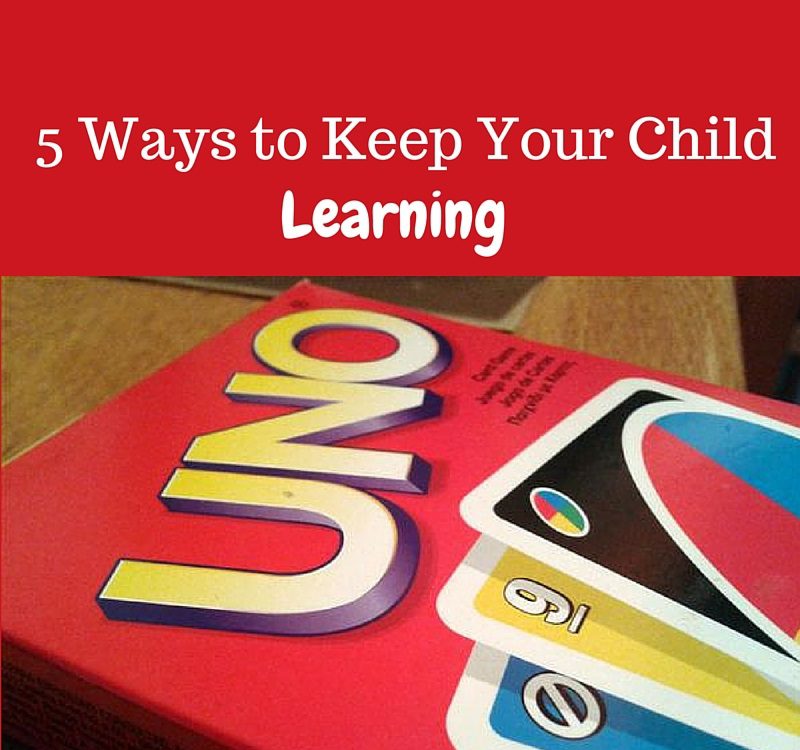
Kids are used to being in school, learning, several hours per day. Now they are going to be home for a break…a long break. Parents want extend their child’s learning into the break but they also want to relax and enjoy family time.
We’ve created some suggestions for parents. Please feel free to send these suggestions home to parents as they are written or add your own to personalize.
Here are five ways to keep kids learning during a break.
1. Play games together
Learning opportunities abound in games. Basic card games can teach addition and sequencing. Scrabble and other word games can teach reading and writing skills. Maybe dust off that old Trivial Pursuit game to review content and teach them a new thing or two. Take a look at the games you already own or maybe purchase a new one. When you start examining games, you will be amazed at all of the academic skills and social skills they teach. By playing family games, you can disguise learning as fun.
2. A new fact each day
Every day have each family member share one new “interesting fact” with the family. As the days go on, you may find your family attempting to make the facts more fun and unique. This provides the kids an opportunity to use their electronics for research or to dig into books on your shelves. You may consider buying a journal, titling it “The ____ Family’s fun facts over _____ break,” and having each person document their facts within the journal. It is a fun way to create a keepsake that can be revisited over and over again.
3. Tape note cards around your house
Yes, you read that correctly. Write the content your child is learning at school on a notecard. Then tape the notecard near light switches, door handles, or any place that is frequently seen in your home. Every time the child walks past the notecard, they can tap it and read what it says.
For example, if your little one is working on vocabu;ary words you can create a notecard for each and tape it by the front door. Every time they walk out the door, your child can tap the notecard and say the word/definition aloud. To make it more interesting, you can tape the cards high, low, and/or interchange them. This same idea also works for math facts, spelling rules, and just about anything you can be creative enough to add to a note card.
4. Create a scavenger hunt
This works well to keep the kids busy for long periods of time. It can also work well when friends or younger family are visiting as the kids can start creating their own scavenger hunts after you model the first one. The list of things they need to find can be academic or just plain fun. In any case, it keeps the kids reading, reasoning, and problem-solving, which are all skills taught daily in school and essential for school success
5. Read with your child
This can be relaxing, fun, and educational for both you and your child. Find a book that you loved at their age and read it to/with them. This is a perfect way to build their fluency and create memories at the same time. The learning that happens while reading together is immeasurable.
You will notice that when your child’s mind is occupied, they are less likely to engage in other activities that may just tire you out more. By picking one or more of the suggested activities, or creating your own, you will find that you all get some relaxation and learning in over break.
Parents will appreciate these and any other suggestions you offer for ideas over break. In addition, you will find that your students will return to your classroom after break full of great family memories and new learning.
Wishing you many happy memories with your family over break as well,






